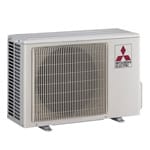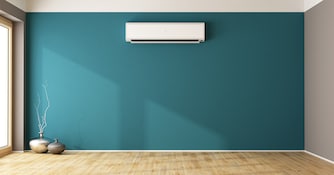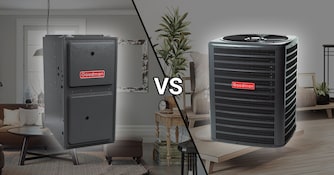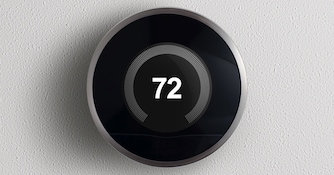
The Difference Between Heat Pumps and Air Conditioners
When the mercury starts to rise, many smart homeowners look to energy-efficient mini split systems to cool their homes, not realizing how effective they can be all year-round!
Ductless air conditioners that can also provide heat in colder weather are called Heat Pumps. Mini split heat pumps can be used anywhere for supplying cold air in the summer and warm air in winter. Cooling-only mini split systems are typically found in tropical or desert climates as well as special applications like server rooms.
But, as versatile as they seem, heat pumps aren't invincible. There is a limit to their heating ability. This means in extremely cold temperatures, even the largest heat pumps may not be able to draw enough heat from the outside to warm your home.
Why You Want a Mini Split Heat Pump
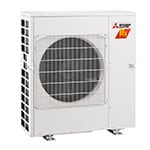 Perhaps you're looking to add air conditioning and heat into your home or vacation rental and you want to find something efficient and economical to install. You can also install these as a ductless alternative to central air systems.
Perhaps you're looking to add air conditioning and heat into your home or vacation rental and you want to find something efficient and economical to install. You can also install these as a ductless alternative to central air systems.
If you need cooling capabilities paired with a heat source, you can install a mini split cooling + heating system, which will provide you with cool air conditioning during warmer seasons, and the perfect amount of heat during colder seasons.
These are ideal for most areas, as long as the outside temperature doesn't drop too low. Some mini split heating + cooling systems are capable of providing heat in temperatures as low as -15 degrees Fahrenheit, but most models will tap out when temperatures drop below 5 degrees Fahrenheit.
Specific heating capabilities are detailed on the product pages, but you can always just call us for help. Once the outside temperature drops too low, your system won't be able to draw a sufficient amount of outdoor heat to function properly. However, you can always retain a furnace or boiler as a backup heat source.
Why You Want a Cooling-Only Mini Split
If you're simply looking to add air conditioning to combat heat and humidity, you might not need to have a cooling + heating (heat pump) unit.
You may want to consider a mini split cooling-only system. Cooling only systems are designed to deliver cool, conditioned air to specific zones. However, if you ever get cold, they're not capable of providing heat.
In most homes and offices, you're going to want heat when temperatures drop below 60 degrees. Even if you have a boiler or furnace, a mini split cooling + heating system can still be used as your primary source of heat with your boiler or furnace standing by as a back-up.
If you don't need heat at all, then a cooling only unit will be perfect for your needs. They're ideal for keeping special rooms (like a server room or sun room) cool, and they may be a good option for tropical and arid climates where temperatures rarely drop below 60 degrees.
How Do Heat Pumps Work?
An air conditioner cools your home by capturing heat inside your home and rejecting it outside. To accomplish this, it begins by sending high-pressure liquid refrigerant through an expansion valve.
This refrigerant, now at a much lower pressure, is ready to evaporate into a gas and heads to the evaporator coil in the indoor unit. Inside the indoor unit, warm indoor air flows across the fins of the evaporator coil, releasing its heat captured by the refrigerant inside and causing the refrigerant to evaporate.
This hot refrigerant gas cycles back to the compressor (located in the outdoor unit) where it is squeezed. Like a sponge, squeezing the refrigerant causes it to release the heat it had absorbed inside the home to the outdoor air moving across the condenser coil thereby cooling the home.
A heat pump system cools your home in exactly the same way, but is also capable of reversing the flow of refrigerant to absorb heat outside and deliver it to the space being heated.
When reversed, the high-pressure liquid refrigerant still goes through the expansion valve, but then heads to the coil in the outdoor unit instead of the indoor unit. In the outdoor coil, this refrigerant evaporates and absorbs heat from the outside air. The refrigerant, now a hot gas, then goes through the compressor and to the indoor unit.
Again under high pressure, the heat is squeezed out of the refrigerant, and the air moving across the indoor coil carries this heat into your room. The refrigerant is now back to being a high-pressure liquid that can absorb more heat from the outdoor air”
We know what you must be thinking, "How is the refrigerant absorbing any heat from outside in the winter?" Unless it's extremely cold, the low-pressure refrigerant that's being depressurized by the valve in your outdoor unit will absorb any trace of heat it can find in order to expand. It takes extreme cold for that low-pressure refrigerant to not find any heat.

